|
|
|
 |
Stadium Events (NTSC) - The North American version of Stadium Events is universally accepted as the rarest licensed NES game available for purchase in North America. The reason for its rarity and subsequent high market price is due to its limited production and sales. At the time of its launch during the holiday season of 1987, Stadium Events (Bandai) was only available in limited stores (Woolworths only <- Unconfirmed [Edit: thanks WolfAlmighty]). In 1988, Nintendo purchased the North American rights to the Bandai Family Fun Fitness mat technology and re-released it as the Nintendo Power Pad. The two Family Fun Fitness-branded games that had already been released, as well as Bandai's version of the running pad accessory, were pulled from shelves and presumed destroyed. Because of this odd sequence of events, only 2000 copies are believed to have been produced, of which it is estimated that 200 copies reached consumers before being recalled. Only 200 copies = RARE.
|
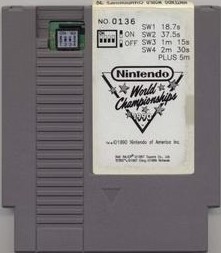 |
Nintendo World Championships Gray - The Nintendo World Championships was a 1990 Nintendo-promoted video game competition that toured twenty-nine cities across the United States. It was based on scoring points in three Nintendo games (Super Mario Bros., Rad Racer, and Tetris) within a time limit of 6 minutes and 21 seconds. For the competition, 116 special game cartridges were manufactured. 90 of these copies exist as the official gray cartridge and were given out to finalists after the championships concluded. Each gray cartridge has a unique number making the cartridge easier to track and difficult to counterfeit. The cartridge feature DIP switches on the front which select the time limit of the game. To play the cartridge, one must have a controller connected to both controller ports and press start on the second player's controller. Since these games were only given out as prizes and not available for purchase, they are rare in the NES community.
|
 |
Nintendo World Championships Gold - The gold version of the Nintendo World Championships were given out as prizes in a separate contest held by Nintendo Power magazine. The gold version cartridge is similar to the Legend of Zelda cartridge. To date there are only 26 of these carts in circulation. Unlike the gray cartridges. The gold cartridges have no unique identification numbers and are difficult to track and authenticate. The circuit boards in the gray and gold cartridges are identical. Both versions of the cartridge feature DIP switches on the front which select the time limit of the game. Because these were only given out as prizes and not available for purchase, NWC GOLD = RARE.
|
 |
Nintendo Campus Challenge - was a video game competition sponsored by Nintendo and held at nearly 60 college campuses throughout the United States in 1991. This game is similar to Nintendo World Championships 1990 except the games have changed. Most copies were destroyed after competitions (unconfirmed). There is only one known original copy of the 1991 Campus Challenge cartridge in existence. The game was found by Rob Walters, at a garage sale in New York in 2006.The game sold in July 2009. 3 months later, the game was resold on ebay.
|
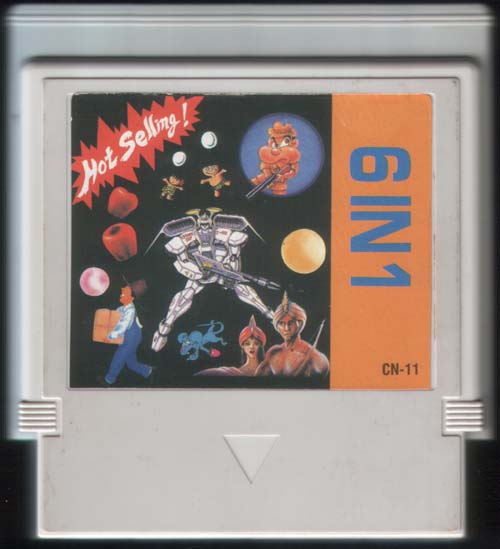 |
Caltron Six in One - is a multicart published in 1992 for the Nintendo Entertainment System and is the only game known to be released by Caltron, a Taiwan-based video game company. 6–in–1, as its title suggests, consists of six different games of various genres. The games included, which are mostly clones of other popular video games of the era, are Cosmos Cop, Adam and Eve, Magic Carpet 1001, Balloon Monster, Porter, and Bookyman. When Caltron Industries, Inc. was going out of business, Myriad Games, Inc., a company based in Kingwood, Texas, bought all of their existing inventory of cartridges. Myriad then took the carts and added a very generic (no graphic art) label. They were then packaged in custom boxes with a folded manual. Each Myriad cart and box were numbered individually. Myriad's only change to Caltron's product was to replace the Calton label with Myriad label. Myriad really only covered the old label and it was too small to cover the old label. (You can still see the Caltron label on the right, orange vertical line, see below). No programming changes were done, hence the game is exactly the same. The title screen still reads "Caltron." The six games on the cart are identical to Caltron's release. Shortly after the release of 6-in-1, Myriad went out of business for unknown reasons. Collectors speculate that fewer than 100 copies of this game still exist, and even fewer are complete. The most valuable copies of the game are those with box, instructions, and the cartridge with matching serial numbers. The lowest known serial number is 000003 [Edit: Thanks Zeldaboy & LucasWeatherby] and the highest is 000888 (unconfirmed). At least two sealed versions are known to exist. Because of these factors the game has become one of the rarest unlicensed games made for the NES. All of this is still under investigation (pending information from Qixmaster).
|
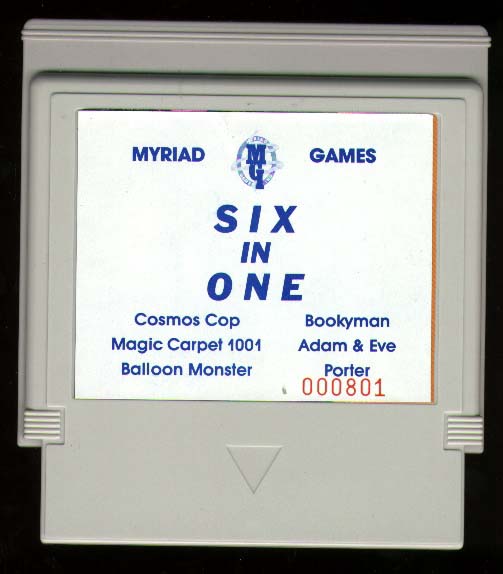 |
Myriad Six in One - See "Caltron Six in One" above. All of the above is still under investigation *Click image below for larger view of Myriad label over Caltron label*
|
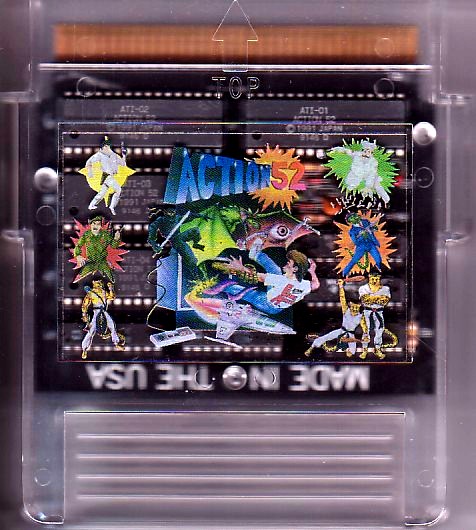 |
Action 52 -Action 52 is an unlicensed multicart consisting of 52 individual and original video games, released in September 1991 for the Nintendo Entertainment System. The cartridge states that it contains 52 "new and original exciting games". The games cover a variety of genres, although the most common are scrolling shooters and platform games. Some of the games include Star Evil, G-Force, Thrusters, Megalonia, Ooze, Non Human, Alfred N the Fettuc, and Bubblegum Rossie. The Cheetahmen was the "featured" game on the Action 52 multicart, and is the predecessor of Cheetahmen 2. Many video game collectors value Action 52 for its notoriety and rarity.
|
 |
Cheetahmen II - is the successor of Cheetahman originally released on the Action 52 cartridge. The Cheetahmen was Active Enterprises' attempt to compete with the success of franchises such as Battletoads and Teenage Mutant Ninja Turtles. The Action 52 cartridge came with a twelve-page comic book providing the Cheetahmen's backstory. The Cheetahmen II consists of six levels, two for each of the three Cheetahmen. The second level includes a boss battle. Other than the bosses, all of the other enemies are characters from the other games, including Saddam Hussein parody Satán Hossain from Storm Over the Desert, a simple overhead tank game where running over Hossain, who appears very frequently, gives the player another life. There were plans for a sequel to The Cheetahmen. Although mostly completed,[unconfirmed] Cheetahmen II was made, but it was never officially released. In 1996, however, 1,500 copies of the game were located in a warehouse, and eventually put on sale on the secondary market.[unconfirmed] All copies of the game were reused Action 52 cartridges, some with a small gold sticker reading "Cheetamen II". Cheetahmen II is famous for its music, and for its lack of quality in all other areas. Like Action 52, it was not licensed by Nintendo.
|
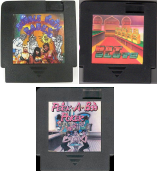 |
Bubble Bath Babes, Hot Slots, & Peek a Boo Poker - are video games made by Hacker International and distributed by Panesian in 1991. These are three pornographic video games the company made for the Nintendo Entertainment System, these went out of mainstream distribution as the industry matured and the "user base broadened". The games were designed and released without Nintendo's permission because of its pornographic elements. The distribution was also limited as major national chains would not carry the items for sale, thus making these three titles very rare to date.
|
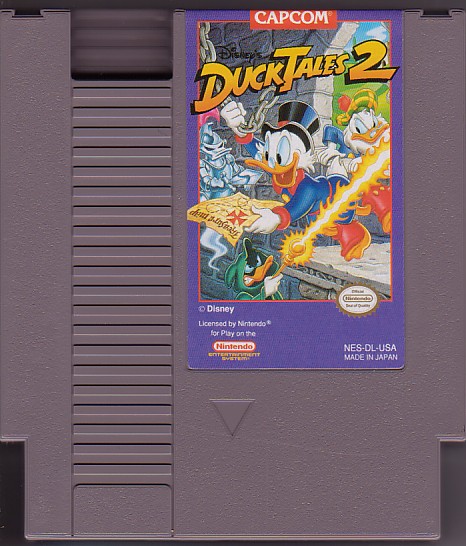 |
Ducktales 2 - released in 1993 was not nearly as successful, popular, or widely acclaimed like the first game that was released in 1989. This is mostly because by 1993, consumers were already focused on the 16-bit machines (SNES & Genesis for example) of that time and the NES was in its twilight years. The game, not having sold very well, is considered to be rare.
|
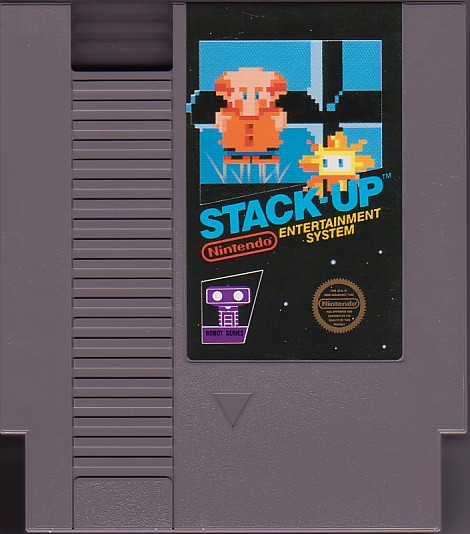 |
Stack Up - was released in 1985 for the Nintendo Entertainment System, designed for use with R.O.B. the Robotic Operating Buddy. Stack-Up is one of two games in Nintendo's Robot Series, the other being Gyromite. While Gyromite was a pack-in game with the R.O.B. itself and therefore came with all the parts needed to play the game, Stack-Up came in a large box containing additional bases and colored discs. Because it was marketed to children and the set came with many small, plastic parts, complete copies of the game are very hard to come by. All Stack-Up cartridges contain the 60-pin circuit board from the Famicom version attached to a 72-pin adapter like the T89 Cartridge Converter for the NES. This is one of the rarest first-party games for the NES.
|
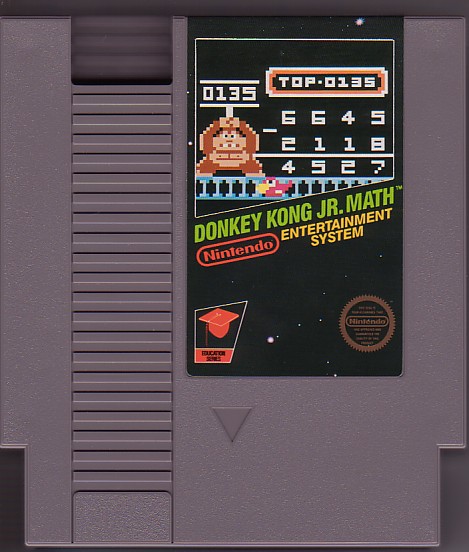 |
Donkey Kong Jr MATH - is a game released for the Nintendo Entertainment System, wherein players must solve math problems in order to win. It was released in 1985 for the Nintendo Entertainment System. It is the only game in the "Education Series" of NES games. Since its release, Donkey Kong Jr. Math has received very negative reception; a Nintendo spokesman commented that it was not well-received, resulting in Nintendo ceasing development of educational games for the time. Because of the poor reception this game received, not a lot of copies were sold and in today's market a complete in box is considered
|
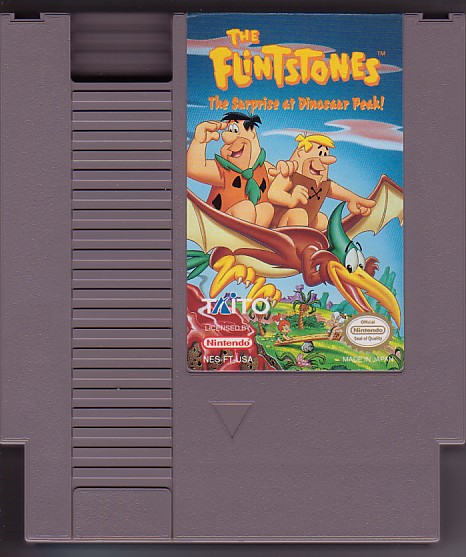 |
Flintstones Surprise at Dino Peak - is a platform video game for the Nintendo Entertainment System created and published by Taito Corporation in 1994. It is the second licensed game based on the 1960s Flintstones television series (the first being The Flintstones: The Rescue of Dino & Hoppy). It was released only to a video rental store in August 1994. It is known to be the second rarest commercially-released licensed title for the NES (behind Stadium Events) due to being a rental only or mail order (at the time) game. (unconfirmed)
|
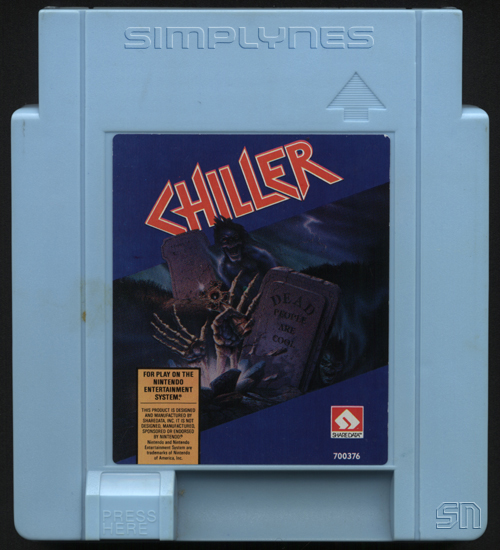 |
Chiller - was released by American Game Carts Incorprated. But in AGCI's early years, when their mother company, ShareData was getting into NES programming, they licensed all development tools from Color Dreams, including the cartridge design.Before American Game Carts was formed, it seems that ShareData had plans to use Color Dreams cart design for their releases, and a small production run of Chiller cartridges were made. Exactly how many carts ShareData had Color Dreams manufacture is unknown. The game doesn't seem to be any different from the first batch of AGCI Chiller carts, the game says ShareData on the titlescreen. The product number on the label, 700376 changed when the game was manufactured using AGCI's own cart design, to 700087. So far around 5-10 of these (product number 700376) carts have been found (unconfirmed).
|
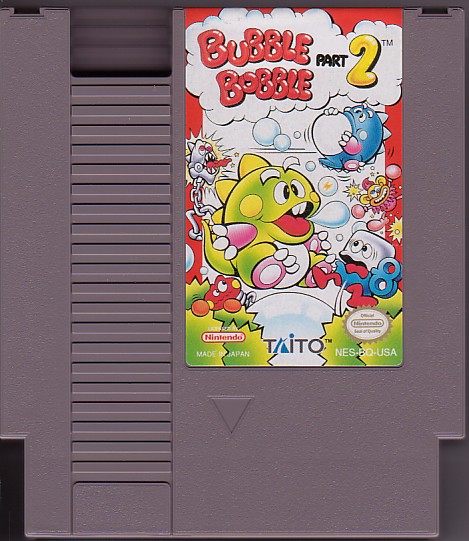 |
Bubble Bobble 2 - Because of its late release on the NES, Bubble Bobble Part 2 is exceptionally hard to find and is sought after by collectors. Loose copies of the game routinely sell on eBay. Bubble Bobble 1 is very common, but Bubble Bobble 2 came out in 1993 which was 2 years after Super Nintendo was available. So not too many people were buying this game at the time, thus leaving us with a rare cart today.
|
 |
Little Samson - another late NES release developed by Taito to compete with popular platform games, from the current information available, there was just not enough exposure for this game, which resulted in low sales. As most of us know (or are currently learning), late/low sales in the 1990s means high collection appeal today.
|
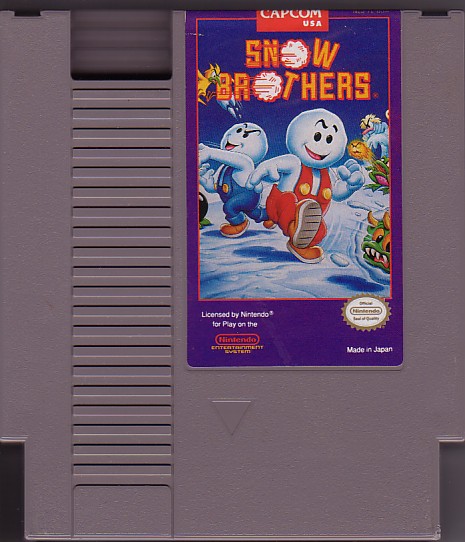 |
Snow Bros. - was yet another late NES release. Developed by Capcom in 1991, this arcade port is very similar to Bubble Bobble. The game did not sell very well even though the game was not bad. Once again, as most of us know (or are currently learning), late/low sales in the 1990s means high collection appeal today.
|
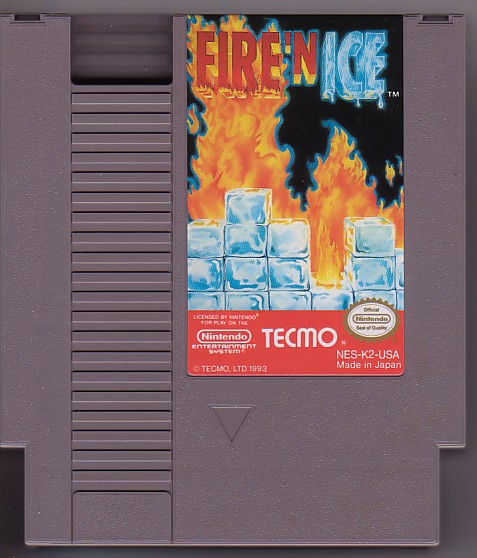 |
Fire N Ice - Fire N Ice is the sequel Solomon's Key. Like some of rare NES games listed above, it was released in 1993, almost 2 1/2 years after the SNES was released and Fire N Ice did not sell well. The name change from Solomon's Key 2 to Fire N Ice in the U.S. probably didn't help any either. (Outside the U.S. the game is called Solomon's Key 2.) Once again, releasing an NES game in 1993 creates a collector's item today.
|
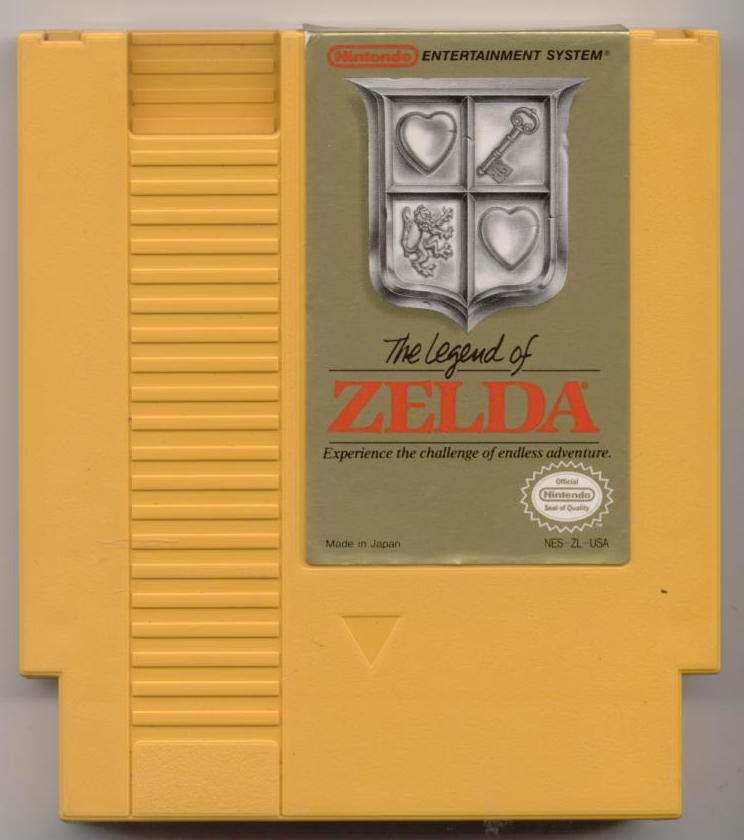 |
Zelda Test Cartridge - Nintendo also produced yellow-plastic carts exclusively for internal use at Nintendo Service Centers and game stores to test their Nintendo Entertainment Systems, although these "test carts" were never made available for purchase by consumer. Making it one of the rarest to find. Other test carts are worth mentioning here; Control Deck Test Cartridge, Joystick Test Cartridge, NTF2 Test Cartridge, Power Pad Test Cartridge, & Port Test Cartridge. All were probably used as described.
|
 |
RacerMate Challenge II - was unlicensed but was available for sale in the USA. The cart is now somewhat rare and the full system is even more unique. A complete system includes the cart, interface box to the controller ports, manual, bike trainer, and handlebar display. A NES console with the lockout chip disabled is needed to play. The cart has no lockout chip or lockout defeating circuits so it must be used on a top loader or a system with the lockout chip disabled. Electrical power is used to put more resistance in the flywheel in the trainer. The speed and power output is transmitted to the NES through the controller ports where the RacerMate Challenge II game reads it and displays it on screen. (From a reliable source IMO) It was rumored that some Racermate games may have been housed in Tengen style cases. This has been confirmed, one of our friends at AtariAge found one of these variants in an Australian game store. This was posted in 2009 and that post can be found here. Click here for a photo of the cart -->
|
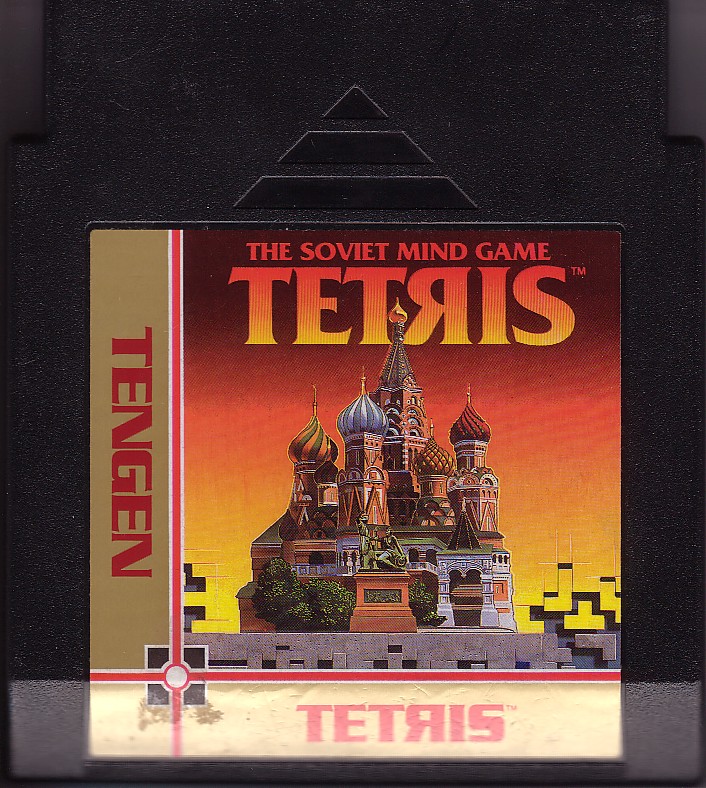 |
Tengen Tetris - a.k.a. The Soviet Mind Game Tetris. Originally distributed by Tengen, this version of Tetris was only available to the public for four short weeks (May 1989 - June 1989) before Nintendo pulled them from the shelves and became the official publisher. Because of the convoluted process surrounding the licensing of the game, both Nintendo and Tengen claimed rights to release Tetris for the NES. A U.S. District Court judge issued an injunction barring Tengen from further distribution of the game, and ordered that all existing copies of the game be destroyed. As a result, 268,000 Tetris cartridges were recalled and destroyed, (confirmed) making Tengen's version of the game rare and collectible.
|
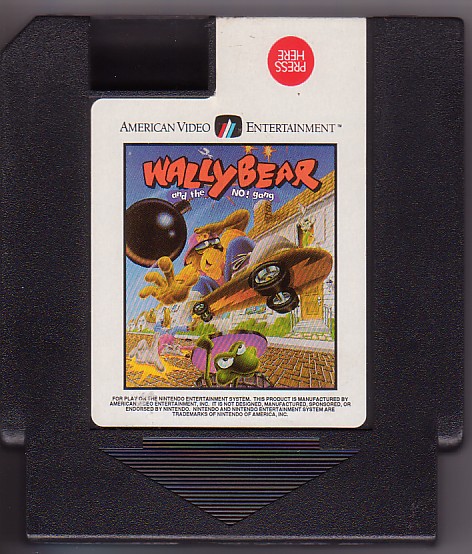 |
Wally Bear and the No! Gang (AVE Version) - The game was originally going to be called Wally Bear and the Just Say No Gang, but this phrase had been trademarked by Nancy Reagan. The Wally Bear Hotline provided by this game, 1-800-HI-WALLY, was still active as of 2006. However, it was disconnected by October 2007, 15 years after the game was released (unconfirmed). American Game Cartridges, Inc. (AGCI) had some financial troubles sometime during 1991 (unconfirmed). To get what would be their last game on shelves, they sold the rights to Wallybear & the No Gang to American Video Entertainment (AVE). American Video Entertainment ended up ultimately releasing the game. That is the game pictured on the left. However, according to Nintendo Age ONLY two prototype Wallybear cartridges (with AGCI style cases) have been discovered. (Confirmed? Excerpt taken from Nintendo Age game database.)
Nintendo Age - Wally Bear and the No! Gang (AVE)
|
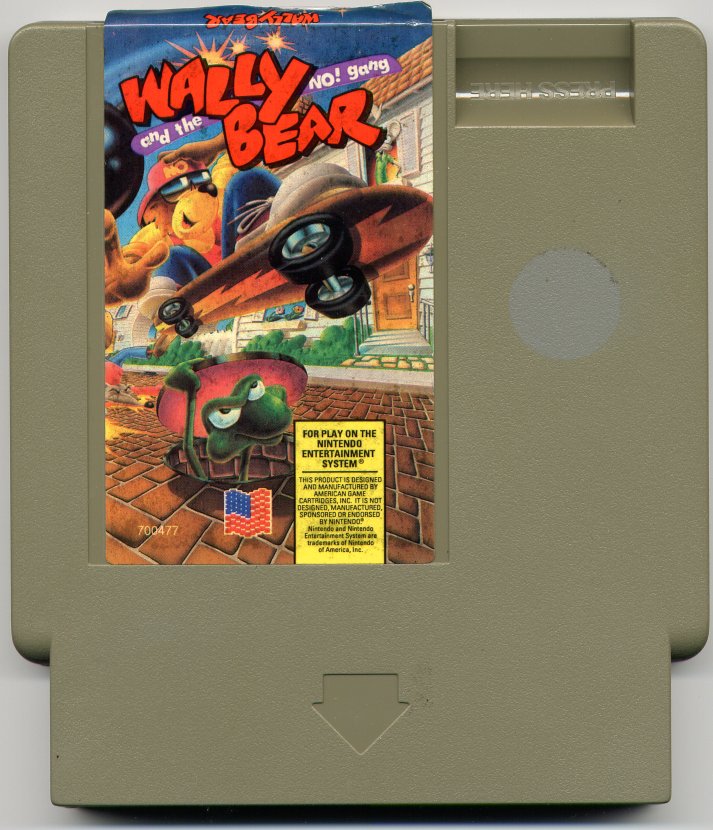 |
Wally Bear and the No! Gang (AGCI Version) - The game was originally going to be called Wally Bear and the Just Say No Gang, but this phrase had been trademarked by Nancy Reagan. The Wally Bear Hotline provided by this game, 1-800-HI-WALLY, was still active as of 2006. However, it was disconnected by October 2007, 15 years after the game was released (unconfirmed). American Game Cartridges, Inc. (AGCI) had some financial troubles sometime during 1991 (unconfirmed). To get what would be their last game on shelves, they sold the rights to Wallybear & the No Gang to American Video Entertainment (AVE). American Video Entertainment ended up ultimately releasing the game. However, according to Nintendo Age ONLY two prototype Wallybear cartridges (with AGCI style cases) have been discovered. The two prototypes are listed as being very different, both externally (no label on one) and internally, the boards appear to be different and according to the NA game database the gameplay was also different. See link below for further information regarding these two cartridges. (Confirmed? Excerpt taken from Nintendo Age game database.)
Nintendo Age - Wally Bear and the No! Gang (AGCI)
|
 |
Minnesota State Lottery - This was mentioned by another NA member. Some info had been found, but this information is patchy at best. September 1991, Minnesota State Lottery came up with the idea of allowing NES owners to play the lottery online through their NES using a modem and a Minnesota State Lottery cart. The "modem" would attach to the expansion port on the bottom of the NES (and here I thought it was just for hiding stuff). The plan was that each user would be given some type of password or code to access the lottery. Supposedly users could pick numbers and buy some type of Instant Win games (E-scratch tickets?) Late in 1991, the project was scrapped due to political pressure. It did get far enough to produce a working game and mockups of the modem. More information regarding the modem can be found here. (Most of the this, if not all, is totally unconfirmed) [Image courtesy of NESMASTER14, thank you.] Old NYT Article about this. And another. Nintendo Age - Minnesota State Lottery (Not Available)
|
 |
Panic Restaurant - Under investigation.
|
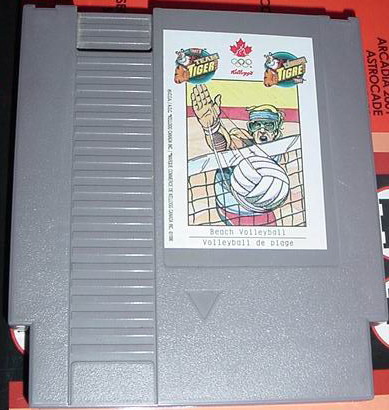 |
Kellogg's Beach Volleyball - No longer under investigation. Through my own research, which consisted on internet searches and contacting the Kelloggs Corporation (see further in this thread for details), it is in the opinion of this NA Member that the Kelloggs Beach Volleyball is not an actual game. I came to this conclusion through lack of information and Kelloggs inability to confirm or deny the authenticity of this game. I believe that that only reason we even have pictures of this game is because someone placed a Kelloggs Olympic Volleyball sticker on a labeless copy of Super Spike V-ball. Please note, this is just my opinion, I am in no way an authority on this and you should conduct your own research if you disagree with my opinion. I will keep this game on this list for reference only. If anyone comes up with anything that disproves my theory I will be happy to change this thread.
|
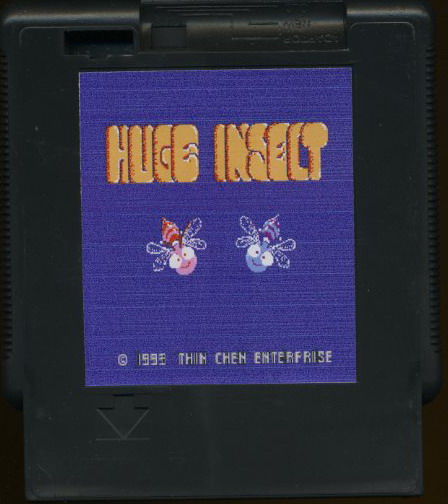 |
Huge Insect - From NA Database: "Huge Insect was a late released game by Sachen. It was basically a company ordered game as it was never sold in retail stores. An estimated 78 copies exist making it very rare and hard to come by. Out of those 78 copies, there are four generations as follows:
*** Please note: the color of the boxes and how they were released is UNCONFIRMED ***
The First Generation copies are EXTREMELY rare. The second and third are very rare as well but can be found with some research. The fourth generation is the most common (even though still very rare) and can usually be found somewhat easier."
|
My videos - http://www.youtube.com/user/hotanime32
New Video - Why You Should Get A Retron 5 - https://www.youtube.com/watch?v=p...
My Drawings - http://videogamehunter.deviantart.com/

Yes and if someone has a Chiller they would like to sale or trade hit me up!
Edit: Post didn't show up from phone